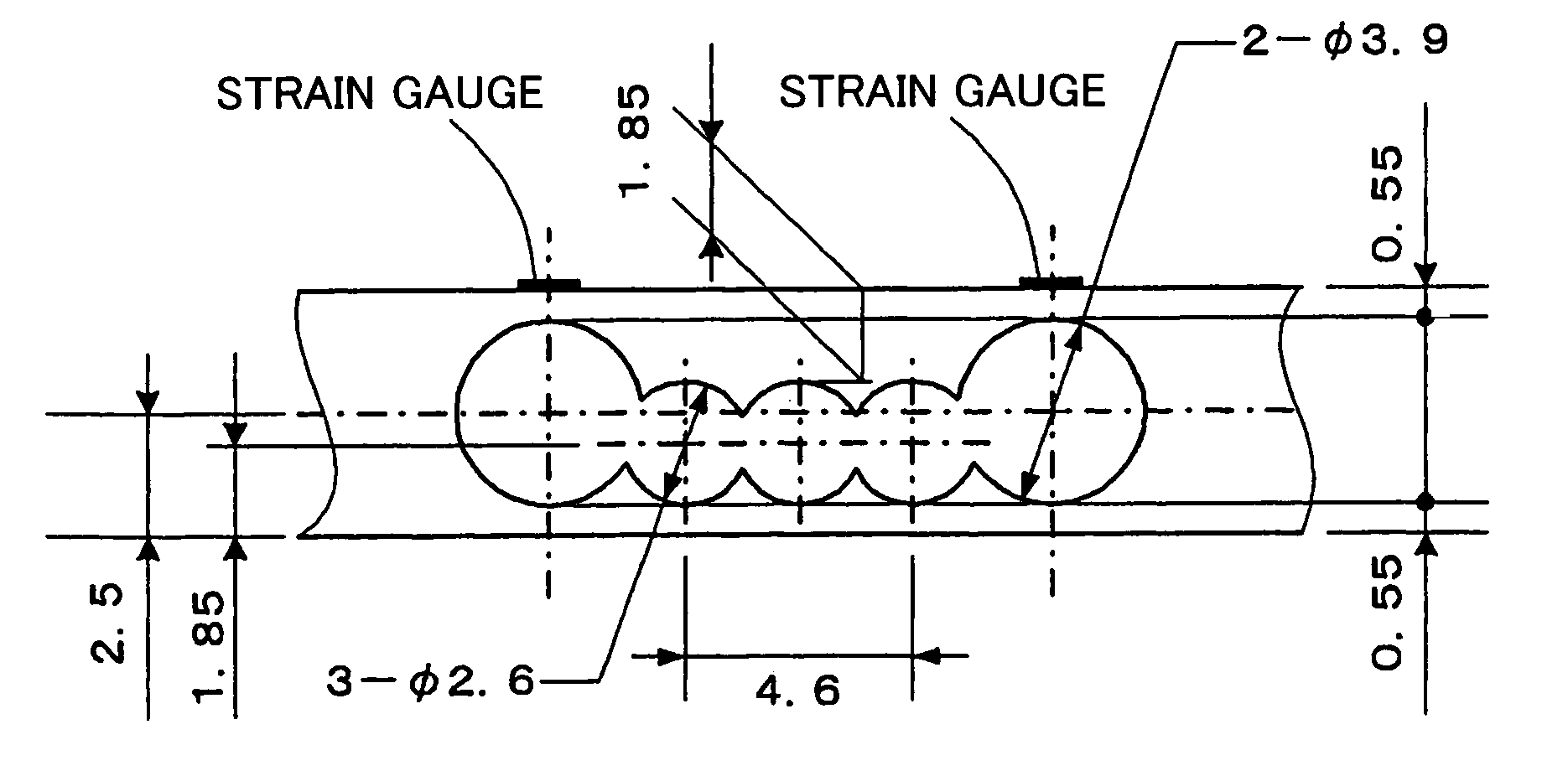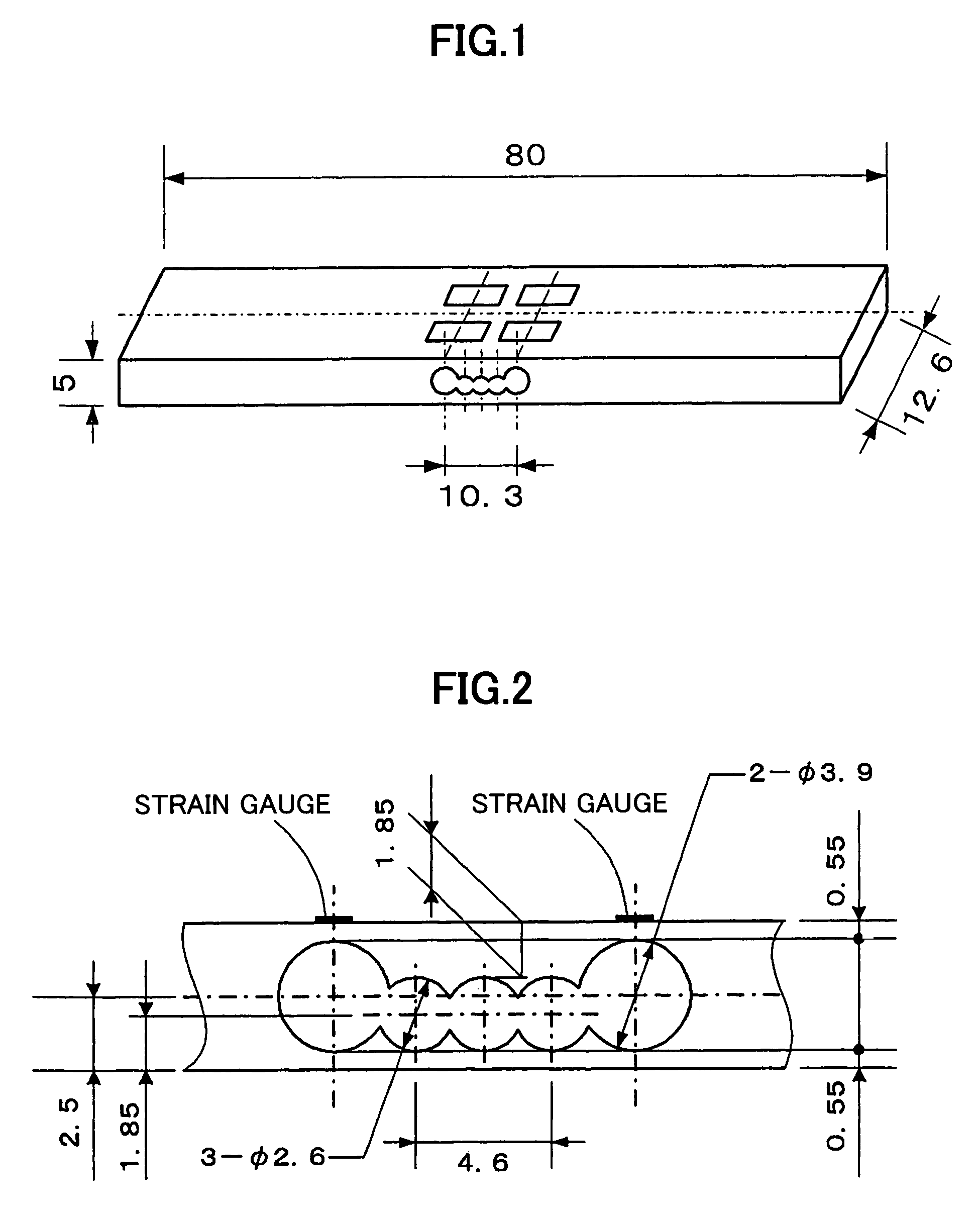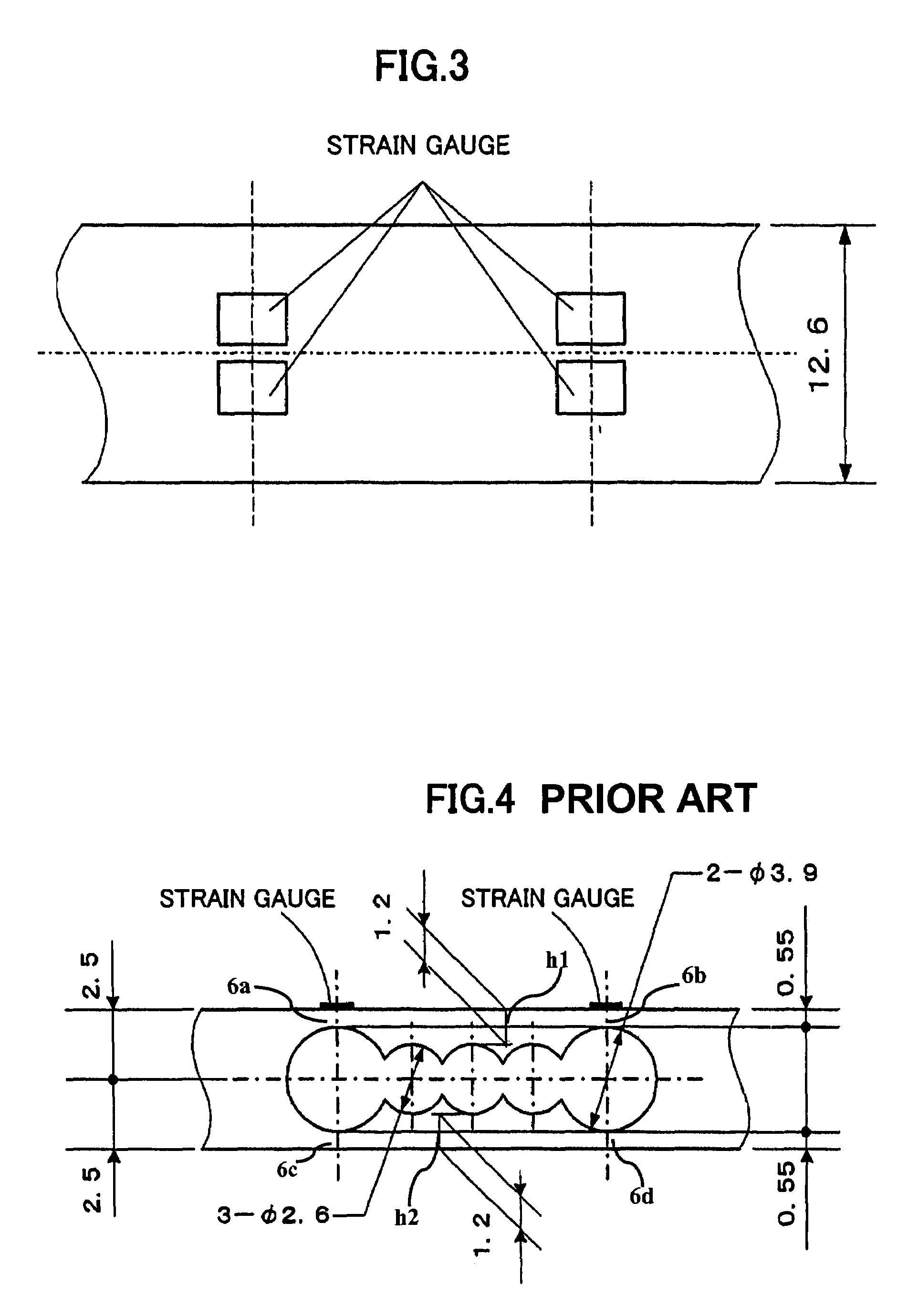Load cell with roberval mechanism
a roberval mechanism and load cell technology, applied in the direction of instruments, apparatus for force/torque/work measurement, traction measurement, etc., can solve the problems of inability to act, increase measurement time, and defective roberval mechanism, so as to maintain linearity and span performance, reduce manufacturing cost, and reduce the effect of profile construction
- Summary
- Abstract
- Description
- Claims
- Application Information
AI Technical Summary
Benefits of technology
Problems solved by technology
Method used
Image
Examples
embodiment 1
[0050]The present inventors have paid their attention to the fact that, in a load cell of Roberval type with strain gauges adhered to strain-generating-portions in one of two arms, any flexure of the entire strain-generating-body in the cantilevered form affects the upper and lower arms and the strain-generating-portions to degrade the linearity performance. Then, they have experimentally found that by making the strain-generating-portions to have same thickness, but making the upper and lower arms to have different thickness, the arm having greater thickness creates the linearity of strain in the strain-generating-portions thereof.
[0051]More concretely, it is preferable to provide proper difference in thickness between the upper and lower arms in such manner that, by making the lower arm thinner than the upper arm, the compressive and tensile force exerted in the upper and lower arms due to flexure of the entire strain-generating-body is supported mainly by the lower arm to balance...
embodiment 2
[0072]The present invention additionally provides Embodiment 2 in which a highly precise load cell is realized simply by adjusting the thickness of a second arm. In Embodiment 1, as described above, on the basis of a load cell in which a channel for forming strain-generating-portions and arms is formed from a plurality of round apertures in a strain-generating-body, an axis of the channel is displaced while keeping the width of the channel to provide different thickness for the upper and lower arms. In contrast thereto, Embodiment 2 of the present invention provide another load cell in which a second arm is only made thinner to widen a channel so that different thickness is provided for first and second arms. Embodiment 2 is useful especially for a relatively large load cell in which both arm have sufficient thickness.
[0073]FIG. 15 illustrates a load cell of the prior art in which arms h1 and h2 have same thickness, and strain-generating-portions 6a, 6b, 6c and 6d have same thicknes...
PUM
| Property | Measurement | Unit |
|---|---|---|
| width | aaaaa | aaaaa |
| width | aaaaa | aaaaa |
| thickness | aaaaa | aaaaa |
Abstract
Description
Claims
Application Information
 Login to View More
Login to View More - R&D
- Intellectual Property
- Life Sciences
- Materials
- Tech Scout
- Unparalleled Data Quality
- Higher Quality Content
- 60% Fewer Hallucinations
Browse by: Latest US Patents, China's latest patents, Technical Efficacy Thesaurus, Application Domain, Technology Topic, Popular Technical Reports.
© 2025 PatSnap. All rights reserved.Legal|Privacy policy|Modern Slavery Act Transparency Statement|Sitemap|About US| Contact US: help@patsnap.com



